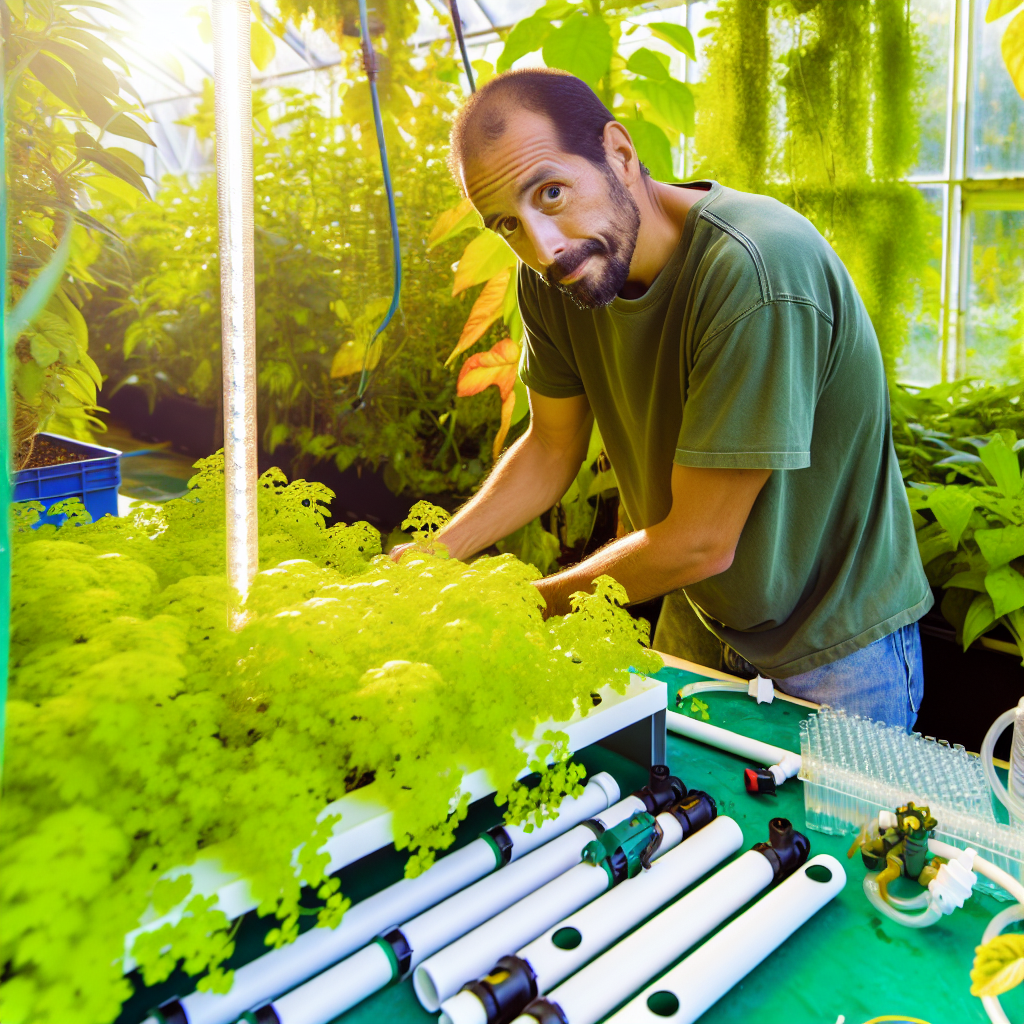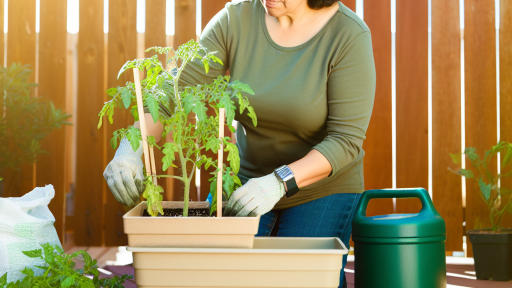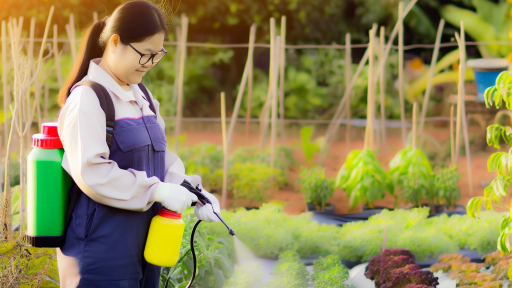Introduction to Hydroponic Systems
Definition of Hydroponic Systems
Hydroponic systems use nutrient-rich water instead of soil to grow plants.
This innovative method provides essential minerals directly to the roots.
Gardeners can cultivate a wide variety of crops indoors or outdoors.
Benefits for City Gardeners
City gardeners face unique challenges, but hydroponics offers significant advantages.
Firstly, it maximizes limited space with vertical growing options.
This approach allows for high-density planting in urban environments.
Additionally, hydroponics uses less water than traditional gardening methods.
Water conservation is vital in densely populated areas.
Furthermore, hydroponic systems can reduce pest and disease issues.
This reduces the need for harmful pesticides, ensuring cleaner produce.
Moreover, urban gardeners can enjoy fresher vegetables year-round.
This method allows for controlled growing conditions, irrespective of seasons.
Lastly, hydroponics can enhance the aesthetic appeal of urban spaces.
Well-designed systems can serve as beautiful green installations.
Types of Hydroponic Systems
Deep Water Culture
Deep Water Culture (DWC) is one of the most popular hydroponic systems.
Transform Your Agribusiness
Unlock your farm's potential with expert advice tailored to your needs. Get actionable steps that drive real results.
Get StartedThis method includes suspending plant roots in nutrient-rich water.
Air stones supply oxygen to the water, promoting root growth.
This system is simple, efficient, and perfect for beginners.
DWC can produce fast-growing plants, thanks to constant nutrient availability.
Nutrient Film Technique
The Nutrient Film Technique (NFT) consists of a thin film of nutrient solution.
This film continuously flows over the plant roots, ensuring they stay hydrated.
One advantage includes high oxygen levels around the roots.
NFT is highly efficient, often resulting in faster plant growth.
However, it requires careful monitoring of the solution flow.
Wick Systems
Wick systems are one of the simplest hydroponic designs.
This system uses a wick to draw nutrient solution from a reservoir to the plants.
Wick systems operate without pumps, making them low-maintenance.
They work well for small plants that do not require constant nutrient supply.
However, these systems may not be suitable for larger plants or high-demand crops.
Essential Components of Hydroponic Systems
Grow Lights
Grow lights are crucial for hydroponic systems.
They provide the necessary light spectrum for plant growth.
LED lights are popular due to their energy efficiency.
Fluorescent lights also work well for seedlings and young plants.
Full-spectrum lights offer the best results for all plant stages.
Consider the light’s intensity and duration for optimal growth.
Timers help in regulating light exposure effectively.
Nutrient Solutions
Nutrient solutions supply essential minerals to plants.
They ensure plants have all necessary elements for growth.
Prepared nutrient mixes are available in various formulations.
Showcase Your Farming Business
Publish your professional farming services profile on our blog for a one-time fee of $200 and reach a dedicated audience of farmers and agribusiness owners.
Publish Your ProfileLiquid fertilizers often dissolve well in water.
Always monitor pH levels to maintain nutrient absorption.
Caring for plants means adjusting the nutrient mix as they grow.
Growing Mediums
Growing mediums provide plants with stability and support.
Common mediums include rock wool, coco coir, and clay pebbles.
Each medium has unique advantages and water retention properties.
Rock wool is excellent for seedlings due to its retention capabilities.
Coco coir is sustainable and promotes healthy root growth.
Clay pebbles are durable and facilitate drainage.
Select a medium that suits your chosen hydroponic system.
Explore Further: Container Gardening Tips For Urban Farmers
Setting Up a Hydroponic Garden
Choosing the Right Location
Select a well-lit area for your hydroponic garden.
Ensure it receives at least six hours of sunlight daily.
Consider proximity to a water source for convenience.
Alternatively, use grow lights if natural light is insufficient.
Gathering Essential Materials
Start with a hydroponic system kit.
Choose between deep water culture, nutrient film technique, or aeroponics.
Gather containers, a pump, and tubing for your setup.
Don’t forget to acquire a pH test kit and nutrients.
Setting Up Your System
Begin by assembling your chosen hydroponic system.
Follow the manufacturer’s instructions for best results.
Connect the pump and ensure all fittings are secure.
Next, fill the containers with the growing medium.
Selecting Plants to Grow
Choose plants that thrive in hydroponic systems.
Leafy greens like lettuce and herbs are excellent for beginners.
Ensure the seeds or seedlings are healthy and disease-free.
Monitoring and Adjusting Conditions
Regularly check the pH levels of your water.
Maintain pH between 5.5 and 6.5 for optimal growth.
Monitor the water temperature; ideally, it should be around 68-72°F.
Adjust nutrient concentrations based on plant needs.
Maintaining Your Hydroponic Garden
Change the water every two weeks to prevent algae growth.
Check for pests and diseases regularly.
Keep the garden clean to encourage healthy growth.
Trim dead or yellowing leaves to promote new growth.
Harvesting Your Crops
Harvest plants at the right time for best flavor.
Use clean tools to avoid contamination during harvesting.
Enjoy your fresh produce and consider growing more crops!
Uncover the Details: Choosing The Right Containers For Farming Plants
Choosing Plants for Hydroponic Systems
Benefits of Hydroponics for City Gardeners
Hydroponics offers several advantages for city gardeners.
First, it maximizes space efficiency.
Showcase Your Farming Business
Publish your professional farming services profile on our blog for a one-time fee of $200 and reach a dedicated audience of farmers and agribusiness owners.
Publish Your ProfileThis method allows for vertical gardening.
Additionally, it uses less water compared to traditional soil gardening.
This leads to sustainable gardening practices.
Moreover, hydroponics can yield faster growth rates.
Finally, it reduces the risk of soil-borne pests and diseases.
Best Plants for Urban Hydroponic Gardens
Choosing the right plants is crucial for success.
Leafy greens thrive in hydroponic systems.
Examples include lettuce, spinach, and kale.
Herbs are also excellent choices.
Popular varieties consist of basil, mint, and cilantro.
Vegetables have their place too.
Consider growing tomatoes, peppers, and cucumbers.
Climate Considerations for City Gardening
The urban climate plays a significant role in plant selection.
Generally, herbs and leafy greens adapt well.
Warm-season crops flourish in sunny areas.
Be mindful of temperature fluctuations in cities.
Use shading techniques during extremely hot days.
Assessing Your Space
Your available space impacts your plant choices.
Evaluate sunlight exposure and air circulation.
Small containers are perfect for limited spaces.
Utilize window sills or balcony areas effectively.
Hydroponic Systems to Consider
Different hydroponic systems cater to various plant types.
Nutrient Film Technique (NFT) works well for leafy greens.
Deep Water Culture (DWC) suits larger plants like tomatoes.
Research each system to determine the best fit.
Local Resources and Community Support
Engaging with local gardening communities can enhance your experience.
Participate in workshops or online forums.
Your local gardening center may have useful information.
Networking with fellow gardeners provides valuable insights.
Gain More Insights: Maintaining Soil Health in Heritage Farms

Maintaining Your Hydroponic System: Nutrient Management and pH Control
Nutrient Management Basics
Nutrient management is essential for successful hydroponics.
Plants require specific nutrients to thrive in a soilless environment.
Common nutrients include nitrogen, phosphorus, potassium, calcium, and magnesium.
Check your nutrient solution regularly to ensure proper levels.
Use a reliable nutrient formulation designed for hydroponics.
Follow the manufacturer’s instructions for mixing and applying nutrients.
Observe your plants for signs of nutrient deficiency or excess.
Adjust nutrient levels based on the growth stage of your plants.
Keep a log of your nutrient adjustments for future reference.
Understanding pH Control
pH levels influence nutrient availability in hydroponic systems.
Showcase Your Farming Business
Publish your professional farming services profile on our blog for a one-time fee of $200 and reach a dedicated audience of farmers and agribusiness owners.
Publish Your ProfileMaintain a pH range of 5.5 to 6.5 to optimize plant health.
Use a pH meter to regularly monitor your solution’s acidity.
Test the pH at least once a week to catch any fluctuations early.
When pH levels fall outside the optimal range, act quickly.
Use pH up or pH down solutions to adjust the levels accordingly.
Allow the nutrients to mix well before retesting the pH.
Document any pH adjustments for better long-term management.
Common Nutrient Deficiencies and Solutions
Recognizing nutrient deficiencies helps you maintain healthy plants.
Chlorosis indicates a lack of nitrogen, leading to yellowing leaves.
Supplement with a nitrogen-rich fertilizer to address this deficiency.
Purpling of leaves can signal a phosphorus deficiency.
Ensure your nutrient mix has adequate phosphorus for flowering plants.
Yellowing leaf edges may indicate potassium deficiency.
Add potassium-based nutrients to remedy this issue.
Maintaining Nutrient Solutions
Regularly refresh your nutrient solution to prevent stagnation.
Replace the solution every two weeks for optimal freshness.
Clean the reservoir thoroughly during each change to prevent buildup.
Check for debris or algae growth and remove it immediately.
Keep the system covered to minimize contamination.
Consider using beneficial microbes to enhance nutrient absorption.
Monitoring Environmental Factors
Ideal temperature and humidity levels support nutrient uptake.
Maintain daytime temperatures between 68°F and 75°F (20°C–24°C).
Nighttime temperatures should not drop below 60°F (15°C).
Keep humidity levels between 40% and 60% to prevent stress.
Install fans or heaters to maintain a stable environment.
Lastly, ensure adequate light exposure for photosynthesis.
Find Out More: Step-by-Step Mushroom Cultivation for Farmers
Common Challenges in Hydroponic Gardening
Understanding Nutrient Imbalance
Nutrient imbalance can affect plant health significantly.
It leads to poor growth and undesirable flavors.
Additionally, it can cause discoloration in leaves.
To tackle this issue, regularly test your nutrient solution.
Adjust nutrient levels based on plant needs.
Consider using a nutrient management app for accuracy.
Managing Water Quality
Water quality is crucial for hydroponic systems.
Poor quality water can introduce harmful pathogens.
Chlorine and heavy metals can also hinder plant growth.
Using filtered or distilled water can solve this problem.
Regularly monitor pH and EC levels for optimum health.
Controlling Light Conditions
Insufficient light can stunt your plants’ growth.
Similarly, too much light can lead to burned leaves.
Showcase Your Farming Business
Publish your professional farming services profile on our blog for a one-time fee of $200 and reach a dedicated audience of farmers and agribusiness owners.
Publish Your ProfileAssess the specific light needs of your plants.
Use grow lights to supplement natural light when necessary.
Adjust the height and duration of lighting based on growth stages.
Avoiding Pests and Diseases
Pest infestations can devastate your hydroponic garden.
Regularly inspect plants for early signs of pests.
Implement preventive measures, such as using pest-repelling plants.
Additionally, consider introducing beneficial insects like ladybugs.
Proper sanitation also helps keep diseases at bay.
Addressing System Failures
System failures can lead to significant crop loss.
Common issues include pump failures and blocked tubes.
Establish a routine for checking system components.
Consider using alarms to notify you of system failures.
Backup systems can provide a contingency in emergencies.
The Impact of Hydroponic Gardening on Urban Sustainability and Food Security
Enhancing Urban Food Production
Hydroponic systems allow city dwellers to grow fresh food.
They can produce crops in small spaces, maximizing limited areas.
This approach boosts local food production significantly.
Furthermore, it reduces dependence on external food sources.
Reducing Environmental Footprint
Hydroponics uses less water compared to traditional farming.
This method minimizes water waste, promoting conservation.
Additionally, it requires no pesticides, ensuring cleaner produce.
This way, urban gardens contribute to healthier ecosystems.
Supporting Community Engagement
Hydroponic gardening fosters community interactions.
Community gardens become spaces for education and outreach.
Residents learn about sustainable practices together.
Moreover, these initiatives often lead to stronger neighborhood ties.
Improving Food Security
Urban hydroponics directly addresses food insecurity.
By cultivating food locally, communities can access fresh produce.
This reduces food deserts, providing healthier options.
Moreover, it empowers individuals to take control of their food sources.
Innovating with Technology
Modern hydroponic systems leverage technology for efficiency.
Smart sensors monitor plant health and environmental conditions.
This leads to optimized growth and resource use.
Consequently, urban gardeners can achieve higher yields.
Building Resilience in Cities
Hydroponic systems contribute to urban resilience.
They help cities adapt to changing climate conditions.
For instance, localized food systems can thrive despite disruptions.
Furthermore, they provide economic opportunities for urban populations.
Additional Resources
How to Transform Your Roof into a Garden or Farm | Civil Eats




